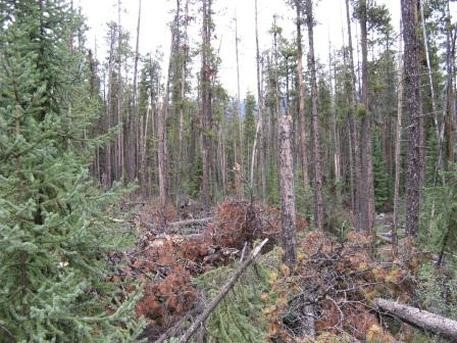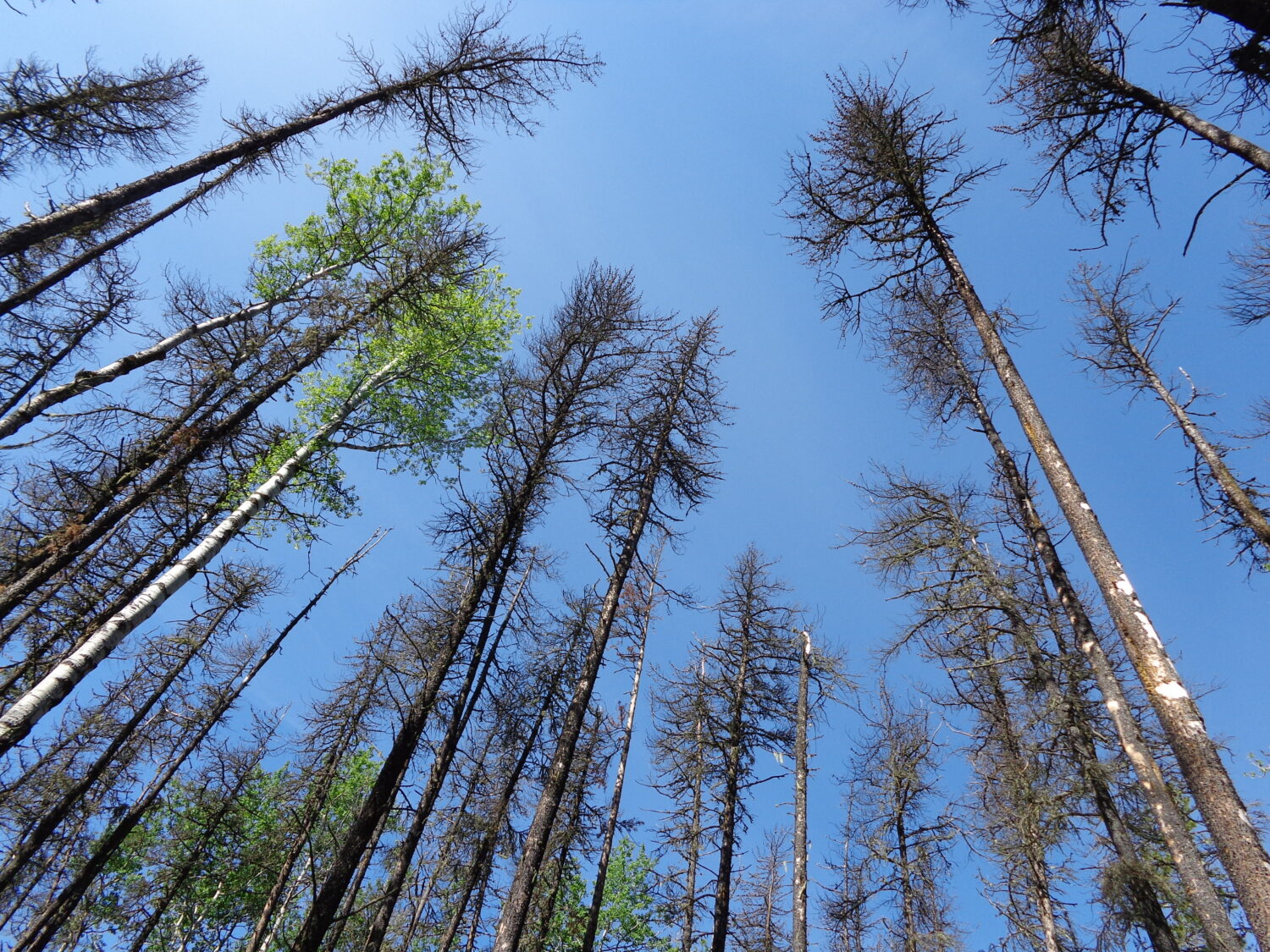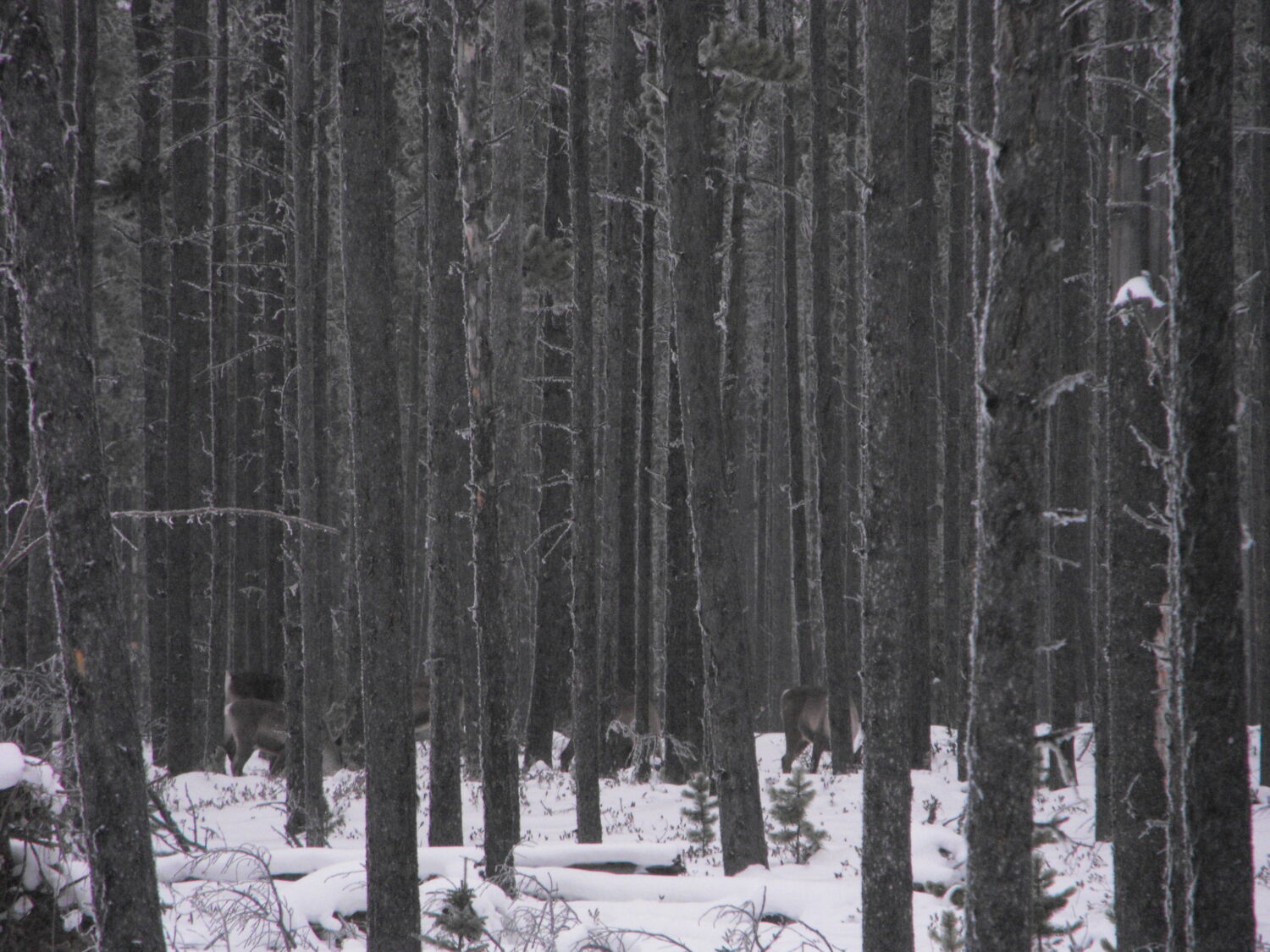Overview
If a tree falls in the forest, and nobody is there to hear it, does it make a sound? It does if it is in one of the long-term study plots in Banff and Jasper. Researchers from the University of Alberta have been monitoring falling, and growing, trees in permanent sample plots since 1967. Measuring these unharvested plots over 50 years tells us how nature changes forests on its own. They have found that natural processes like competition and seed dispersal are critical. But also sudden events like windstorms and insect outbreaks make some noise..
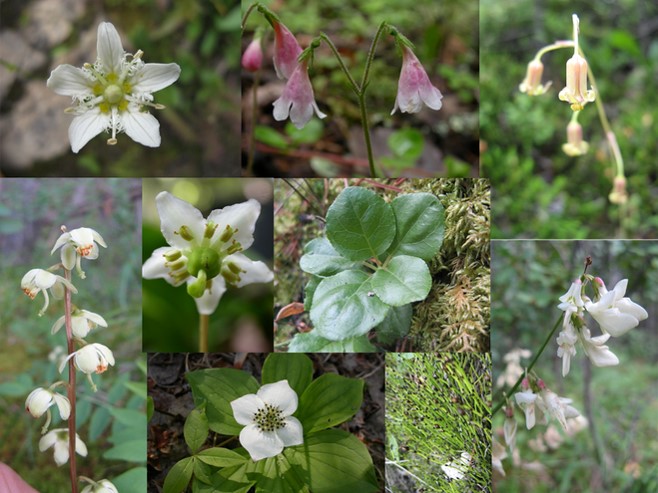
Image credit: Benoit Gendreau-Berthiaume
Background
As forests age, they change in fascinating ways. Since the early 1800s, foresters have recognized that left undisturbed, mature forests can grow from communities of grasses and shrubs. As they grow, the forest passes through clear phases of different plant communities. This succession in the boreal region is a slow process, perhaps taking a century or more. But there have been surprisingly few attempts to study succession in Alberta.
One way to understand succession is to patiently measure forest community change over a very long time. Using forests where human influences are minor, measuring change in plant composition over time will identify the most important natural processes. But this could take a century or more in some forests! So the commitment to cross-generational, long-term measuring of key features of the forest community must be there. This is the key element of the Rocky Mountain Pine Stand study.
Begun in 1967, the study established a simple plot design in 63 plots in forests typical for the Rocky Mountains in Banff and Jasper National Parks. Five of these plots were very large (100 x 100m) and designed as permanent sample plots, representing the entire landscape from Jasper to Banff. The original intent was to highlight the plant community of mature forests that had not been disturbed by man or nature in a long time. Since then though, a series of researchers have continued to measure some of these plots and report on the turnover of individual trees and plant species in an already mature forest. This has helped answer the question “does succession end?”. Is there a point where, left ‘undisturbed’, succession will stop and the existing mix of species will simply age, die and be replaced by a constant mix of species. A climax community.
EBM of forests rests on understanding the balance between succession and disturbance. Alberta’s forests are disturbance-prone. Natural processes such as fire, wind or insects, reset succession so that it either never reaches the climax community or is mature for only a short time. EBM seeks to replace natural- with human-caused disturbances in a way that preserves the patterns and processes as closely as possible to nature. But to do this, it is important to understand how this succession proceeds in the absence of human disturbances so that managers know how, where and when to harvest. The long-term study of Rocky Mountain Pine Stand Succession was set up before EBM was explicitly described, but has, in retrospect, become an important contributor to our ability to implement EBM in Alberta.
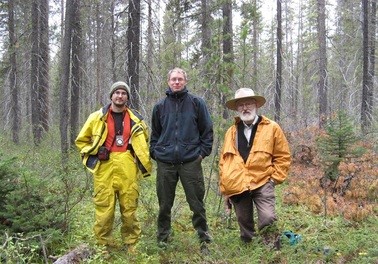
Image credit: Benoit Gendreau-Berthiaume
Innovation
There are shortcuts to measuring succession. Techniques such as dendrochronology (measuring tree rings) and longitudinal surveys (measuring the spatial distribution and abundance of tree stands of different ages) can emulate the successional path in time. But actually following a stand over decades is an ambitious and rare undertaking. The innovation in this study is the audacity in maintaining a permanent sample plot for more than 50 years to measure succession in real time.
Discovery
There have been many results from this study begun by Roger Hnatiuk in 1967. A little over a decade from its inception, George LaRoi suggested that in lodgepole pine dominated forests, lodgepole pine is not the climax species, but Douglas fir is. This shows that disturbances such as fire or insect outbreaks (or both) interrupt forest succession before the climax is reached. More recently Benoît Gendreau-Berthiaume reported that lodgepole pine stands in these plots show some features of climax communities, with gaps created by dead pine trees being filled by growing pine trees. Pine tree death was caused both by disturbances (wind, insects, fire) as well as competition from neighboring trees.
Where in the wheel?
Managing forests as ecosystems, complete with a mosaic of young and old stands (and everything in between), is aided by an understanding of natural stand dynamics. This study contributed, and continues to contribute, to that understanding. Pine dominated forests in the western boreal may not require stand replacing events to be held at a sub-climax state. EBM in the boreal forest of the Alberta Rockies could include selective harvest and first thinning that promotes long-lived pine or fir forests.

